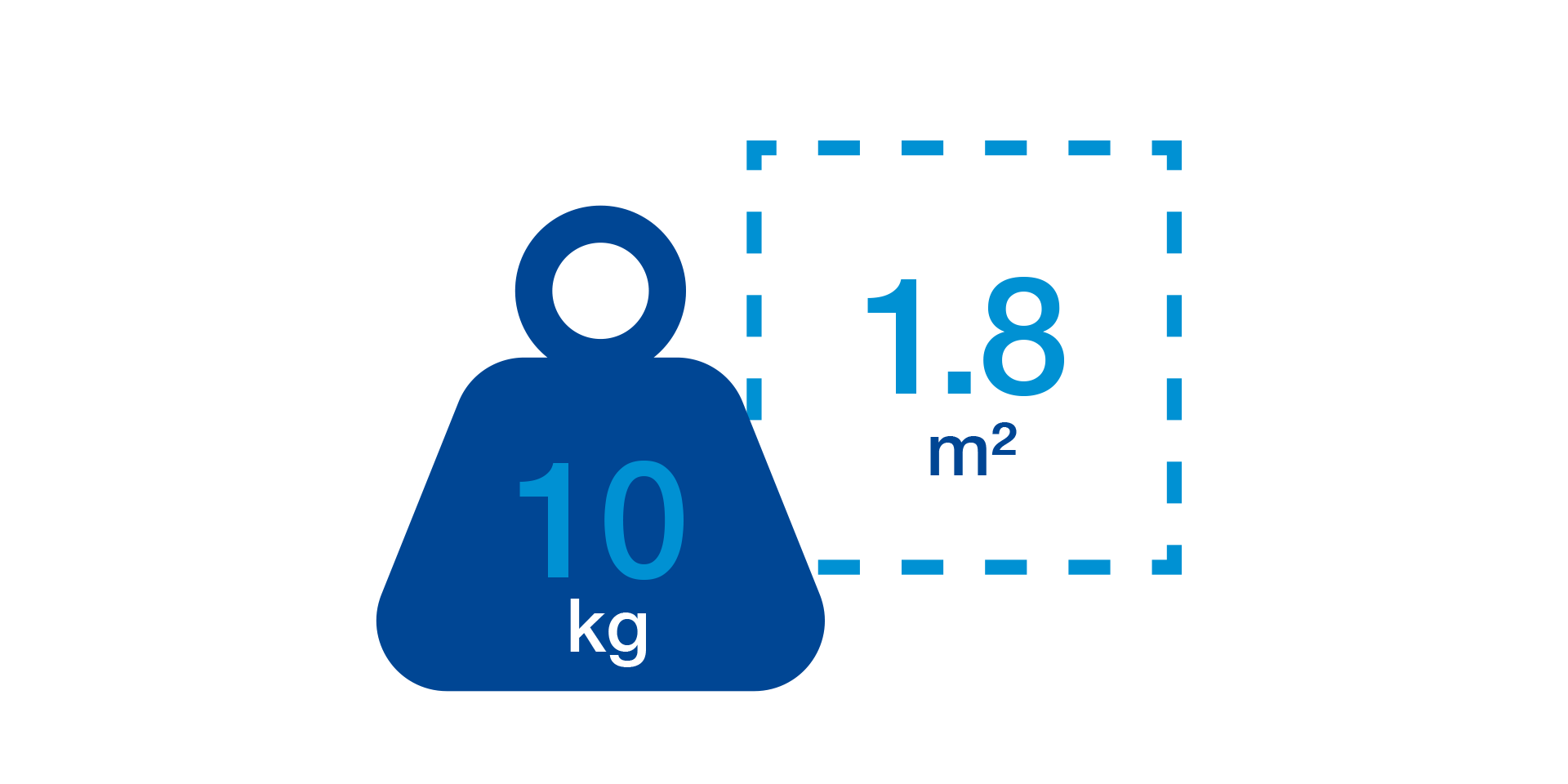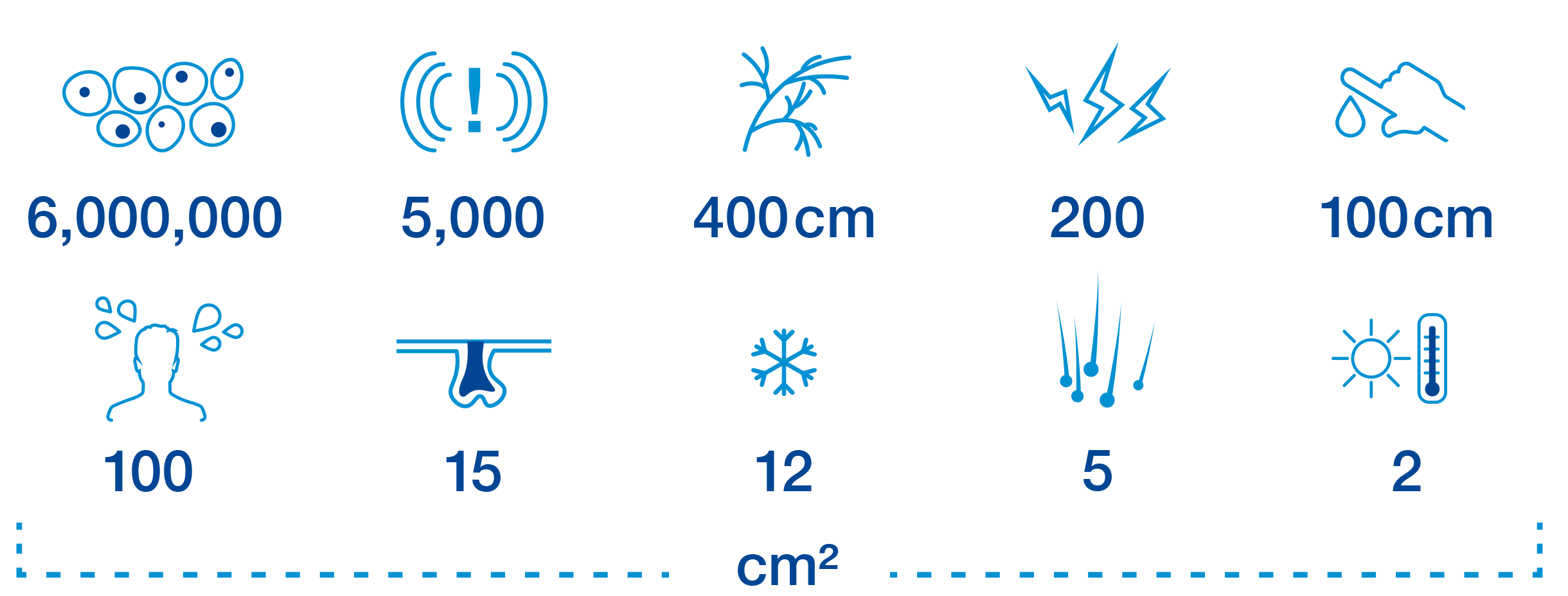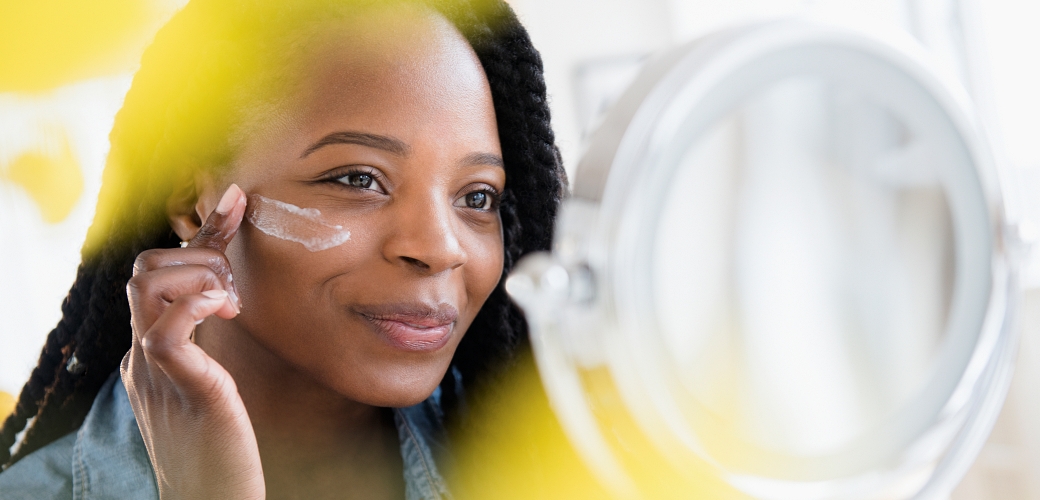
The skin
Interesting facts about skin
Everything here revolves around the right care for your skin. In this article, we'd like to give you a few interesting facts: things that you don't necessarily need to know, but which may still surprise you or leave an impression. They might just prove useful the next time you play Trivial Pursuit.
Skin & hair not only have a big impact on our appearance, but they have an influence on our well-being. Telly Savalas and Dwayne Johnson aside, everyone is familiar with a "bad hair day" or the saying "feel comfortable in your own skin".
Our skin can tell you how we have lived. Facial wrinkles, calluses on hands, or rings under a person's eyes all tell their own personal story. Still, this kind of assessment is done with swabs and is not as analytical as with hair.
Our skin, hair and sun pages contain plenty of articles about the functions of the skin and hair. Sometimes facts become impressive when we crunch the numbers.
And sometimes a look at the animal kingdom can surprise us. We've picked out a few pieces of information for you and collected them below.
Facts & figures

Weighing up to 10 kilograms and with a surface area of around 1.8 square meters, our skin is by far the largest organ in the human body.

We actually absorb vital oxygen through it, though this amounts to just one percent of our overall needs. The lungs are primarily responsible for oxygen intake.

They are vital. Skin loss of 20%, e.g. due to burns, can lead to death. Covering it in gold like in James Bond? Not so much.

Skin also prevents significant water loss. It only releases as much moisture as is required to regulate body temperature, equating to about half a liter to one liter per day/night. This amount can increase many times over if we exercise. There are 2-3 million sweat glands, with several thousand thermoreceptors involved in regulation. The number of cold receptors is many times higher than heat receptors.

Up to 6 million skin cells can be found on every square centimeter of our body. It also contains: 5,000 sensory end organs – 400 cm nerve fibers – 200 pain sensors – 100 cm of blood vessels – 100 sweat glands – 15 sebaceous glands – 12 cold receptors – 5 hairs – 2 heat receptors.

The surface temperature of men’s skin is warmer than that of women's skin. It also produces more sebum and looks greasier. What's more, men’s skin is slightly thicker than women’s skin.

The skin "renews" itself approx. every 30 days.

The top 18 to 23 layers of the skin (the stratum corneum) consist of dead cells.

The human skin is around 0.6 mm thick (thinner on the eyelids, thicker on the soles of the feet). The skin of rhinos, a pachyderm (which means "thick skin"), can be between 2 and 4 cm thick.

We lose more than 200 million skin cells per day (or about 58 kg worth in our lives). Did you know that these old cells are the primary component of domestic dust?

Weightlessness in space has effects on the skin. When astronauts spend a long time in space, they begin to molt, like birds do in spring. Calluses and skin flakes come off the soles of the feet. This happens after about 2.5 to 3 months in space. It is caused by the fact that feet are not exposed to the same pressure and strain as they are on earth. To prevent the atmosphere in the space station from being unnecessarily polluted with flying skin flakes, astronauts take off their socks in front of a filter that essentially sucks in the loose skin flakes.
Video from ISS Science Garage

Around 17,300,000,000 microorganisms live on our skin, with approximately one million bacteria on every square centimeter of skin. More than 500 different species have been identified to date. This essential diversity of life on our skin is sometimes referred to as our "second skin." This layer and its composition is important for our skin's health.

A skin pH of 5-6 is considered healthy.

If certain areas of the skin are stressed repeatedly or permanently, e.g. by friction or pressure, then thick calluses will form. These calluses are particularly noticeable among tennis players or craftspeople.

Since 1975, the different skin types have been divided into a scale, with the classification being developed by American dermatologist Thomas B. Fitzpatrick. There are six skin types, ranging from 1 (very light skin) to 6 (very dark skin). Which type are you? Go to our article about skin types here.

A polar bears’ skin is black.

Only people and horses sweat heavily over their whole body to cool down. Other (not all) warm-blooded animals also have sweat glands, but these serve less to cool them down and more to provide "grip."

Although snakes look slippery and wet, their skin is dry and may be smooth or rough.

You probably know someone who has a cat allergy. But do you also know a cat who is allergic to people? In fact, cats can be allergic to human skin scales and get asthma.
This concludes our little excursion into the world of facts and figures. Now we want to once again dedicate ourselves to correct care. Bear in mind: Do what is good for you and feel good while doing it.
Interesting facts about hair
Did you know that hair is used to clean oceans? Or that blond people sometimes have to go home with a different hair color after a visit to the swimming pool? Discover interesting facts from the world of hair.


